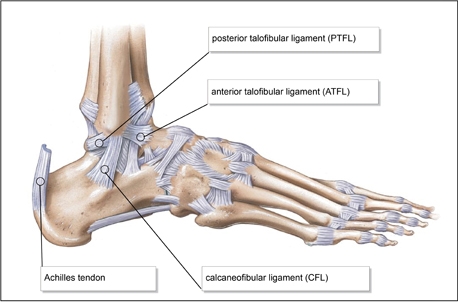Ankle sprains are among the most common injuries people encounter, whether due to a sports injury, daily activities, or even a simple misstep.
Health on Grange Physiotherapy plays a crucial role in the healing process, helping to restore function, prevent re-injury, and strengthen the ankle for the future!
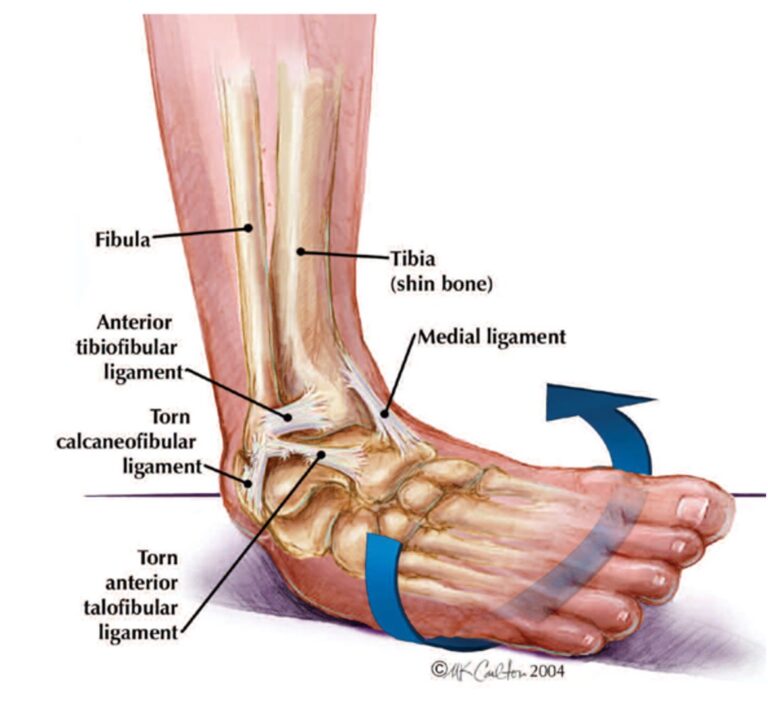
What is an Ankle Sprain?
Ankle sprains occurs when the ligaments, which are the tissues connecting bones, are stretched, or torn. The most common sprains involve the ligaments on the outside (lateral) of the ankle which is called ATFL (Anterior Talofibular Ligament) and CFL (Calcaneofibular Ligament).
The severity of an ankle sprain is graded into three categories and expected healing and rehab timeframe would be different.
- Grade 1 (mild) : Stretched ligaments but not torn, minimal swelling and tenderness – 2-3 weeks
- Grade 2 (moderate) : Partial tear of the ligaments, more noticeable swelling, bruising, and difficulty walking – 4-6 weeks
- Grade 3 (Severe) : A complete tear of the ligament, causing significant pain, swelling, bruising and instability in joint – 6 weeks ~
Clinical Assessments: What to expect from physiotherapy sessions
- Observation
- Swelling assessment
- Gait assessment
- Range of Motion (ROM)
- Ankle movements
- Ligaments stress testing
- Arthrokinematics
- Joint gliding movements
- Muscle Strength testing
- Ankle Joint strength
- Calf muscle strength
- Peroneal muscle strength
- Proprioception testing
- Static balance
- Dynamic balance
Effective management of Ankle Sprains: Guided by physiotherapists at Health on Grange Physiotherapy
1. Immediate management (P.E.A.C.E & L.O.V.E)
- Protection
- Avoid Anti-Inflammatory
- Compression
- Education
- Load
- Optimism
- Vascularisation
- Exercise
2. Early Rehab
- Improving Range Of Motion (ROM)
- Manual treatments – Joint Mobilisation, Taping, Dry needling, Soft Tissue Release
- Ankle ROM exercises – Weighted Knee To Wall
- Strengthening
- Calf raises (standing / seated)
- Peroneal muscle exercises
- Improving Range Of Motion (ROM)
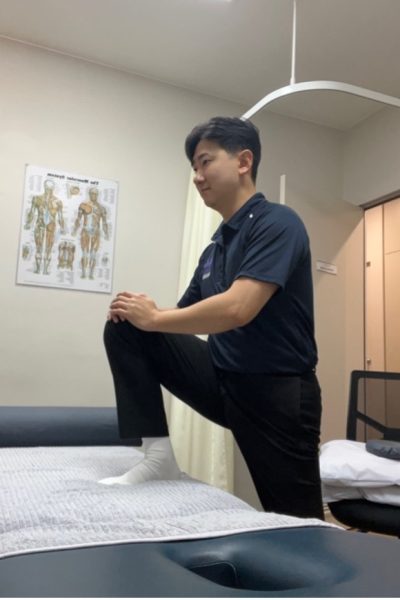
3. Progressive Rehab
- Strengthening and stability
- Proprioception
- Static balance
- Dynamic balance – Star Excursion
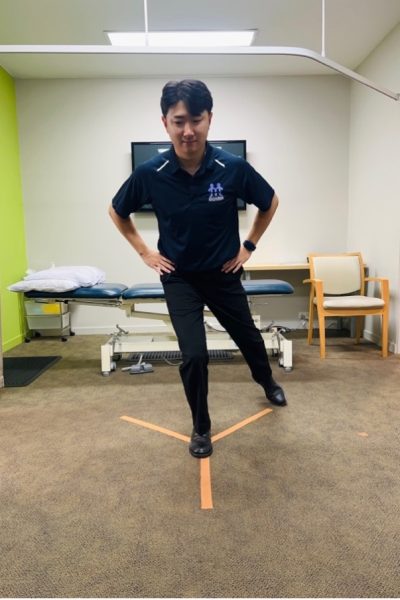
4. Return to sports/activities
- Sports specific training
- Plyometrics
- Drop jump
- Single leg dynamic hop
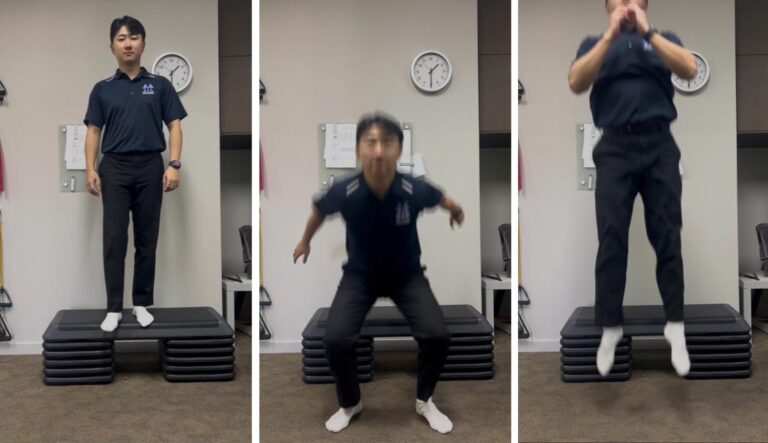
5. Preventing future ankle sprains or chronic ankle instability
- Warm-up and stretching drills
- Injury prevention exercise programs
- Self-management plan
This is a brief overview of managements of ankle sprains.
Ankle sprains, though common, are often not treated properly. This results in residual weakness and possible impairments of the ankle. These residual symptoms are the high-risk factors that lead to chronic ankle instability, with a result of a longer time needed to be taken to rehabilitate.
Exercise type, intensity, progression, programs, and treatments are dependent on your own symptoms and presentations.
Therefore, we strongly recommend you have a thorough assessment with a physiotherapist to enable getting better safely!
With manual treatment and a tailored program developed with Health on Grange Physiotherapy, you can recover fully and reduce the risk of future injuries as soon and safe as possible.
Don’t hesitate! Health on Grange Physiotherapy is ready to help you!
Author: Charlie Shin, Physiotherapist, Health on Grange Physiotherapy
References:
Delahunt, E. et al. (2018) ‘Clinical assessment of acute lateral ankle sprain injuries (roast): 2019 consensus statement and recommendations of the International Ankle Consortium’, British Journal of Sports Medicine, 52(20), pp. 1304–1310. doi:10.1136/bjsports-2017-098885.
Dubois, B. and Esculier, J.-F. (2019) ‘Soft-tissue injuries simply need peace and Love’, British Journal of Sports Medicine, 54(2), pp. 72–73. doi:10.1136/bjsports-2019-101253.
Loudon, J.K., Reiman, M.P. and Sylvain, J. (2013) ‘The efficacy of manual joint mobilisation/manipulation in treatment of lateral ankle sprains: A systematic review’, British Journal of Sports Medicine, 48(5), pp. 365–370. doi:10.1136/bjsports-2013-092763.
Pourkazemi, F., Hiller, C.E., Raymond, J., Nightingale, E.J. and Refshauge, K.M., 2014. Predictors of chronic ankle instability after an index lateral ankle sprain: a systematic review. Journal of Science and Medicine in Sport, 17(6), pp.568-573.
Vuurberg, G. et al. (2018) ‘Diagnosis, treatment and prevention of ankle sprains: Update of an evidence-based clinical guideline’, British Journal of Sports Medicine, 52(15), pp. 956–956. doi:10.1136/bjsports-2017-098106.

